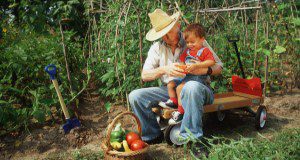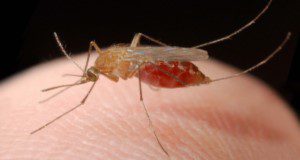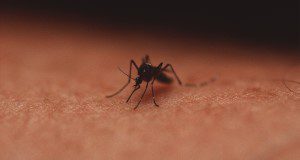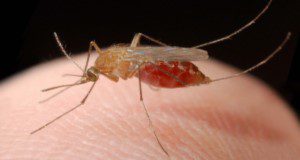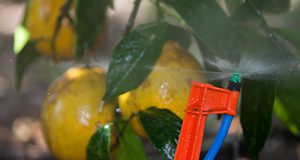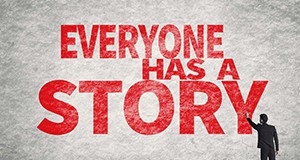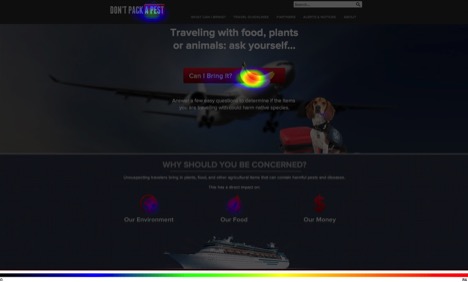In the southeastern United States, many agricultural, vulnerable, and rural communities (AVRCs) must cope with natural disasters regularly. These natural disasters not only harm communities, crops, and livelihoods, but also can negatively impact the mental health of affected individuals, including those living in AVRCs. The purposes of this new 3-page article are to (1) provide tips on identifying specific individuals who could qualify as community leaders and (2) provide details on how partnering with community leaders can be beneficial for mental health communication and outreach. Written by Lisa Lundy, Jacqueline Aenlle, Ricky Telg, Tracy Irani, Angie Lindsey, Ashley Mcleod-Morin, Michaela Kandzer, and Phillip Stokes, and published by the UF/IFAS Department of Agricultural Education and Communication.
https://edis.ifas.ufl.edu/wc383
Tag: Ricky Telg
Using Social Media to Communicate in an Emergency Situation
The Prevent & Protect publication series focuses on the creation of different material formats to resonate with various audiences and ways to maximize their efficacy in communicating risk to the public about mosquito control. This new 4-page publication of the UF/IFAS Department of Agricultural Education and Communication explains how to engage in effective crisis communication and how to effectively use the Prevent & Protect emergency toolkit in a mosquito-related crisis situation. Written by Ashley Mcleod-Morin, Ricky Telg, Phillip Stokes, Alena Poulin, Shelli Rampold, Angela B. Lindsey, and Sandra Anderson.
https://edis.ifas.ufl.edu/wc363
Understanding Public Perceptions of Mosquito-Related Information Sources and Adapting Research Findings to the Needs of Industry Professionals
The Prevent & Protect publication series focuses on the creation of different material formats to resonate with various audiences and ways to maximize their efficacy in communicating risk to the public about mosquito control. The overview of the Prevent & Protect project, developed by the UF/IFAS Center for Public Issues Education in Agriculture and Natural Resources (PIE Center), can be found in EDIS publication AEC694/WC357, Public Perceptions of Mosquitoes and Mosquito Control. This new 3-page document describes the importance of understanding and adapting to public perceptions of information sources and how scientists can adapt their research findings based upon the needs of professionals in the field to create usable outreach materials. Written by Shelli Rampold, Ricky Telg, Alena Poulin, Sandra Anderson, Angela B. Lindsey, Ashley McLeod-Morin, and Phillip Stokes, and published by the UF/IFAS Department of Agricultural Education and Communication.
https://edis.ifas.ufl.edu/wc358
Public Perceptions of Mosquitoes and Mosquito Control
The Prevent & Protect publication series focuses on the creation of different material formats to resonate with various audiences and ways to maximize efficacy in communicating about mosquito-related risks and mosquito control topics to the public. This new 3-page publication of the UF/IFAS Department of Agricultural Education and Communication provides a background of public opinion on various aspects of mosquito control covered in the Prevent & Protect campaign. Written by Shelli Rampold, Ricky Telg, Alena Poulin, Sandra Anderson, Angela B. Lindsey, Ashley McLeod-Morin, and Phillip Stokes.
https://edis.ifas.ufl.edu/wc357
Meeting With Elected Officials
This 3-page document is one in a series on communicating with policymakers and elected officials, and discusses strategies for meeting with elected officials. Written by Ricky Telg and Shelli Rampold and published by the UF/IFAS Department of Agricultural Education and Communication, January 2019.
http://edis.ifas.ufl.edu/wc318
Strategies for Engaging and Communicating with Elected Officials
This 5-page document is one in the series Communicating with Elected Officials. It details a strategy for those seeking to engage with elected officials. Written by Ricky W. Telg and Shelli D. Rampold and published by the UF/IFAS Department of Agricultural Education and Communication, December 2018.
http://edis.ifas.ufl.edu/wc324
Recruiting and Retaining Members in Agricultural Organizations
Many organizations struggle with recruiting new members and retaining current members. The UF/IFAS PIE Center conducted membership surveys of the Florida Cattlemen’s Association and Florida CattleWomen to aid both groups in their membership efforts. This 3-page document discusses common membership barriers and practices in order to help agricultural organizations be better equipped to attract new members and keep current ones. Written by Ricky Telg and published by the UF/IFAS Department of Agricultural Education and Communication, March 2018.
http://edis.ifas.ufl.edu/wc300
Differences in Perceptions of Agricultural Water Use between the General Public and Local Officials
Due to the scarcity of water resources among states and the influx of people, balancing agriculture and public water needs has become a contentious issue. Therefore, dialogue msut take place to educate and inform the general public and local officials about the reality of agricultural water use. This is the second article in a series describing the differences in perceptions of agricultural water use in Florida between the general public and local officials. This four-page fact sheet identifies the differens among groups for agricultural water use and provides ways to change Extension programming according to these differences. Written by Courtney T. Owens, Alexa J. Lamm, and Ricky W. Telg and published by the Department of Agricultural Education and Communication.
http://edis.ifas.ufl.edu/wc249
Attitudes and Perceptions of Agricultural Water Use in Florida Expressed by the General Public and Local Officials
The use of water has become increasingly contentious because an increased population is sharing a decreasing amount of water. Water remains Florida’s most plentiful natural resource but is at risk as the agriculture industry and Floridians demand more water for a variety of uses. This four-page fact sheet discusses the media’s influence on perceptions of agricultural water use, the measurement of attitudes and perception towards agricultural water use, and ways to educate the general public and local officials on this issue. Written by Courtney T. Owens, Alexa J. Lamm, and Ricky W. Telg, and published by the Department of Agricultural Education and Communication.
http://edis.ifas.ufl.edu/wc248
How the General Public and Local Officials Prefer to Learn about Agricultural Water Use in Florida
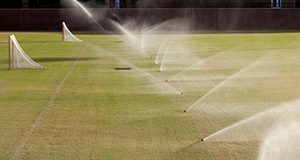
Water is a precious resource that is invaluable to the state of Florida. The amount of water being used daily in the state is estimated at 14.3 million gallons. Part of a series dedicated to describing the preferred ways of learning about agricultural water use in Florida, this study can be used to assist Extension educators and the agricultural industry at large in the development of strategies meant to inform people about the realities of water use. This three-page fact sheet helps Extension educators understand preferred learning mediums so they can provide useful information about agricultural water use. Written by Courtney T. Owens, Alexa J. Lamm, and Ricky W. Telg and published by the Agricultural Education and Communication Department.
http://edis.ifas.ufl.edu/wc247
Writing and Designing for the Web series
Knowing how to create and design a website is a valuable skill. This four-part series explains general tenants of good web design, covers the terminology and techniques involved in creating appealing, user-friendly websites, and also discusses basic HTML coding and developing visual elements for the web. Written by Ricky Telg, Laura Gorham, and Tracy Irani, and published by the UF Department of Agricultural Education and Communication, August 2015.
http://edis.ifas.ufl.edu/topic_series_writing_and_designing_for_the_web
Teaching to Personality Types series

A person’s personality affects the way he or she learns best. Extension programs can use an understanding of different learning styles and preferences to reach the greatest number of people. This 4-part series covers the various personality types and explains how Extension can teach to these types. Written by Alexa J. Lamm and Ricky W. Telg, and published by the UF Department of Agricultural Education and Communication, September 2015. (Photo credit: Rawpixel Ltd/iStock/Thinkstock.com)
http://edis.ifas.ufl.edu/topic_series_teaching_to_personality_types
Letting Them In: Sharing Your Story with People outside of Your Industry

Those who work in agriculture often face the challenge of explaining their work to people outside of their field. Identifying what your audience cares about is the first step in formulating a story you audience will understand and value. This 3-page fact sheet also offers do’s and don’ts for crafting a story for non-expert audiences. Written by Brandon Telg, Jaron Jones, and Ricky Telg, and published by the UF Department of Agricultural Education and Communication, July 2015. (Photo credit: monkeybusinessimages/iStock/Thinkstock.com)
http://edis.ifas.ufl.edu/wc216
Story Development
Stories let you share who you are with the world. Storytelling can help develop an organization’s identity, improve interactions with the public, and foster teamwork. This 2-page fact sheet covers the basics of good storytelling and strategies for crafting an engaging story. Written by Brandon Telg, Jaron Jones, and Ricky Telg, and published by the UF Department of Agricultural Education and Communication, July 2015. (Photo credit: elwynn1130/iStock/Thinkstock.com)
http://edis.ifas.ufl.edu/wc215
Storytelling through Social Media
You and organization can use social media to tell you story and reach a large and diverse audience. This 3-page factsheet covers the major social media platforms, what each platform offers, and how to use theme effectively. Written by Brandon Telg, Jaron Jones, Ricky Telg, and Becky Raulerson, and published by the UF Department of Agricultural Education and Communication Department, July 2015.
http://edis.ifas.ufl.edu/wc218
Face-to-Face Storytelling
In the agricultural industry, telling your story is critical for establishing your operation’s identity. Communicating face-to-face is one method of getting your message to the public. This 2-page fact sheet presents tips and strategies for delivering your story to a live audience. Written by Brandon Telg, Jaron Jones, and Ricky Telg, and published by the UF Department of Agricultural Education and Communication, July 2015.
http://edis.ifas.ufl.edu/wc217
Using Heat Maps to Determine the Usability of Extension Communication Materials
 This heat map from a website usability test shows that more people click on the banana image than anywhere else on the computer screen, followed by the button at the top of the screenshot. This tool allows Extension faculty to determine the ease of respondent use of the communication material. This 6-page fact sheet explains how to use heat maps and how to develop heat map questions in Qualtrics. Written by Laura M. Gorham, Shuyang Qu, Ricky Telg, and Alexa Lamm, and published by the UF Department of Agricultural Education and Communication, February 2015.
This heat map from a website usability test shows that more people click on the banana image than anywhere else on the computer screen, followed by the button at the top of the screenshot. This tool allows Extension faculty to determine the ease of respondent use of the communication material. This 6-page fact sheet explains how to use heat maps and how to develop heat map questions in Qualtrics. Written by Laura M. Gorham, Shuyang Qu, Ricky Telg, and Alexa Lamm, and published by the UF Department of Agricultural Education and Communication, February 2015.
http://edis.ifas.ufl.edu/wc198
Conducting Interviews for News Stories
 In order to write a good news story for print, television, or radio, you have to conduct interviews with the people who have the information you need. An interview is the process of asking good questions so you can get good answers for your news story. This 3-page fact sheet provides some tips to follow as you conduct a news story interview. Written by Ricky Telg, and published by the UF Department of Agricultural Education and Communication, January 2015. (Photo: VStock/Thinkstock.com)
In order to write a good news story for print, television, or radio, you have to conduct interviews with the people who have the information you need. An interview is the process of asking good questions so you can get good answers for your news story. This 3-page fact sheet provides some tips to follow as you conduct a news story interview. Written by Ricky Telg, and published by the UF Department of Agricultural Education and Communication, January 2015. (Photo: VStock/Thinkstock.com)
http://edis.ifas.ufl.edu/wc194
News Writing for Television and Radio
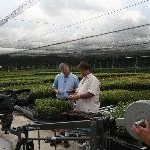 Creating a television or radio story is more than hitting “record” on a video camera or audio recorder. You have to learn the process of writing an effective television and radio news story first. This 4-page fact sheet was written by Ricky Telg, and published by the UF Department of Agricultural Education and Communication, January 2015.
Creating a television or radio story is more than hitting “record” on a video camera or audio recorder. You have to learn the process of writing an effective television and radio news story first. This 4-page fact sheet was written by Ricky Telg, and published by the UF Department of Agricultural Education and Communication, January 2015.
http://edis.ifas.ufl.edu/wc193
Grammar and Punctuation
 Any news story should be as free of grammar and punctuation errors as possible. Grammar is a system of rules that defines the use of the language. Most of the grammar and punctuation rules you have learned in school will be the same when using Associated Press Style, but there are some differences. This 4-page fact sheet covers some common grammatical and punctuation issues for journalists. Written by Ricky Telg, and published by the UF Department of Agricultural Education and Communication, January 2015. (Photo: iStock/Thinkstock)
Any news story should be as free of grammar and punctuation errors as possible. Grammar is a system of rules that defines the use of the language. Most of the grammar and punctuation rules you have learned in school will be the same when using Associated Press Style, but there are some differences. This 4-page fact sheet covers some common grammatical and punctuation issues for journalists. Written by Ricky Telg, and published by the UF Department of Agricultural Education and Communication, January 2015. (Photo: iStock/Thinkstock)
http://edis.ifas.ufl.edu/wc192
